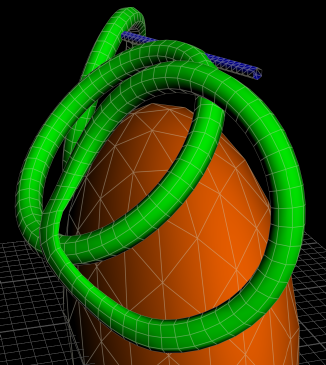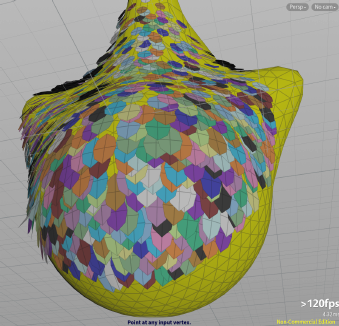
Common Operator Info

|
Documented Operators
Common Operator Info |

three hinged surfaces, one soft |

feather de-interpenetration using colliding soft hinges |
An optional Driver Surface can be used as a moving basis for the rotation axis.
The Offset A, Offset B, and Offset C adjust the pivot points A, B, and C relative to the driver. If no driver is provided, the offset values alone provide the pivot points in world space.
If Temporal is on, the Response specifies how quickly the hinged surface returns to its rest position when not in collision.
The Angle Limit sets a maximum rotation resulting from a collision.
The Dead Radius is a distance from the rotation axis for which collisions are ignored. This can reduce intense reactions due to a short level arm. The collision reaction is ramped up to full at a distance given by the Live Radius.
The Threshold specifies the desired distance of points on the hinge away from the collider.
If Twist is on, the Twistiness allows the hinge some twist perpendicular to the primary rotation axis.
If Soft is on, the whole hinge no longer shares a single rigid rotation. The Softness specifies how different the rotation of neighboring vertices can be.
The Passes is the number of iterations used to resolve a solution, intended for twistiness and softness. The Rate is how much of each calculated correction is actually applied for an iteration.
Web page, Copyright 2008-2021, Free Electron Organization